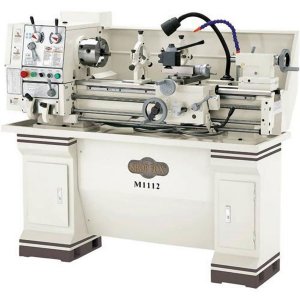- Joined
- Jul 30, 2017
- Messages
- 635
Actually, the 4 jaw is usually used for accurate work, and the 3 jaw for less important work. The reasons for that is that with the independent 4 jaw you can (and will) dial in each jaw separately until the part turns true. A typical 3 jaw chuck is operated by a scroll, which is a machined spiral groove that the jaws follow as they are tightened all together toward the center of the chuck. That design is inherently less accurate than a chuck with independent jaws, but faster to get the work chucked up. A typical 3 jaw ( if there actually was such a thing) might have several thousandths runout when clamping the work, and no good way to adjust it out. The discrepancies may be different with different work diameters as well. Nature of the beast. It is fine for less critical work. 4 jaw independent chucks can also grip the work tighter.
Aside from the above, three jaws are good for triangular, hex, or 9 or 12 sided work. 4 jaws are good for 4, 8, 12, or 16 sided work. Also, not all 4 jaw chucks are independent, some are scroll. And not all 3 jaws are scroll chucks, some are independent.
Some chucks are very high accuracy, smooth and solid gripping. The jaws are ground properly so the work does not stick out of the chuck at an angle from square. Others are cheaply made junk, and others are totally worn out. Know the difference, and whether the sizes of the chucks is appropriate for the lathe and the work you will expect them to do.
Anyway, a chuck is not just a chuck...
Hi bob, Thanks for the additional details about chucks - It would be great if they had a book "Everything you wanted to know about chucks but were afraid to ask" or "Chucks for Dummies" I would by that book in a heart beat.

